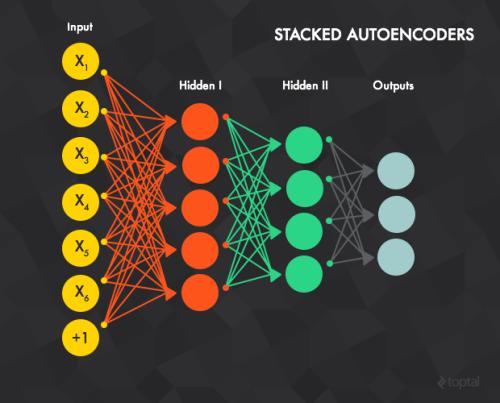
This paper presents a biometric recognition system based on hand geometry. We describe a database specially collected for research purposes, which consists of 50 people and 10 different acquisitions of the right hand. This database can be freely downloaded. In addition, we describe a feature extraction procedure and we obtain experimental results using different classification strategies based on Multi Layer Perceptrons (MLP). We have evaluated identification rates and Detection Cost Function (DCF) values for verification applications. Experimental results reveal up to 100% identification and 0% DCF
相關內容
Hate speech is a form of online harassment that involves the use of abusive language, and it is commonly seen in social media posts. This sort of harassment mainly focuses on specific group characteristics such as religion, gender, ethnicity, etc and it has both societal and economic consequences nowadays. The automatic detection of abusive language in text postings has always been a difficult task, but it is lately receiving much interest from the scientific community. This paper addresses the important problem of discerning hateful content in social media. The model we propose in this work is an extension of an existing approach based on LSTM neural network architectures, which we appropriately enhanced and fine-tuned to detect certain forms of hatred language, such as racism or sexism, in a short text. The most significant enhancement is the conversion to a two-stage scheme consisting of Recurrent Neural Network (RNN) classifiers. The output of all One-vs-Rest (OvR) classifiers from the first stage are combined and used to train the second stage classifier, which finally determines the type of harassment. Our study includes a performance comparison of several proposed alternative methods for the second stage evaluated on a public corpus of 16k tweets, followed by a generalization study on another dataset. The reported results show the superior classification quality of the proposed scheme in the task of hate speech detection as compared to the current state-of-the-art.
Recent research in disaster informatics demonstrates a practical and important use case of artificial intelligence to save human lives and suffering during natural disasters based on social media contents (text and images). While notable progress has been made using texts, research on exploiting the images remains relatively under-explored. To advance image-based approaches, we propose MEDIC (Available at: //crisisnlp.qcri.org/medic/index.html), which is the largest social media image classification dataset for humanitarian response consisting of 71,198 images to address four different tasks in a multi-task learning setup. This is the first dataset of its kind: social media images, disaster response, and multi-task learning research. An important property of this dataset is its high potential to facilitate research on multi-task learning, which recently receives much interest from the machine learning community and has shown remarkable results in terms of memory, inference speed, performance, and generalization capability. Therefore, the proposed dataset is an important resource for advancing image-based disaster management and multi-task machine learning research. We experiment with different deep learning architectures and report promising results, which are above the majority baselines for all tasks. Along with the dataset, we also release all relevant scripts (//github.com/firojalam/medic).
In this study, we examine if engineered topological features can distinguish time series sampled from different stochastic processes with different noise characteristics, in both balanced and unbalanced sampling schemes. We compare our classification results against the results of the same classification tasks built on statistical and raw features. We conclude that in classification tasks of time series, different machine learning models built on engineered topological features perform consistently better than those built on standard statistical and raw features.
Despite the rapid advance of unsupervised anomaly detection, existing methods require to train separate models for different objects. In this work, we present UniAD that accomplishes anomaly detection for multiple classes with a unified framework. Under such a challenging setting, popular reconstruction networks may fall into an "identical shortcut", where both normal and anomalous samples can be well recovered, and hence fail to spot outliers. To tackle this obstacle, we make three improvements. First, we revisit the formulations of fully-connected layer, convolutional layer, as well as attention layer, and confirm the important role of query embedding (i.e., within attention layer) in preventing the network from learning the shortcut. We therefore come up with a layer-wise query decoder to help model the multi-class distribution. Second, we employ a neighbor masked attention module to further avoid the information leak from the input feature to the reconstructed output feature. Third, we propose a feature jittering strategy that urges the model to recover the correct message even with noisy inputs. We evaluate our algorithm on MVTec-AD and CIFAR-10 datasets, where we surpass the state-of-the-art alternatives by a sufficiently large margin. For example, when learning a unified model for 15 categories in MVTec-AD, we surpass the second competitor on the tasks of both anomaly detection (from 88.1% to 96.5%) and anomaly localization (from 89.5% to 96.8%). Code will be made publicly available.
We propose methods for making inferences on the fairness and accuracy of a given classifier, using only aggregate population statistics. This is necessary when it is impossible to obtain individual classification data, for instance when there is no access to the classifier or to a representative individual-level validation set. We study fairness with respect to the equalized odds criterion, which we generalize to multiclass classification. We propose a measure of unfairness with respect to this criterion, which quantifies the fraction of the population that is treated unfairly. We then show how inferences on the unfairness and error of a given classifier can be obtained using only aggregate label statistics such as the rate of prediction of each label in each sub-population, as well as the true rate of each label. We derive inference procedures for binary classifiers and for multiclass classifiers, for the case where confusion matrices in each sub-population are known, and for the significantly more challenging case where they are unknown. We report experiments on data sets representing diverse applications, which demonstrate the effectiveness and the wide range of possible uses of the proposed methodology.
We propose a new model-free feature screening method based on energy distances for ultrahigh-dimensional binary classification problems. Unlike existing methods, the cut-off involved in our procedure is data adaptive. With a high probability, the proposed method retains only relevant features after discarding all the noise variables. The proposed screening method is also extended to identify pairs of variables that are marginally undetectable, but have differences in their joint distributions. Finally, we build a classifier which maintains coherence between the proposed feature selection criteria and discrimination method, and also establish its risk consistency. An extensive numerical study with simulated data sets and real benchmark data sets show clear and convincing advantages of our classifier over the state-of-the-art methods.
Many tasks in natural language processing can be viewed as multi-label classification problems. However, most of the existing models are trained with the standard cross-entropy loss function and use a fixed prediction policy (e.g., a threshold of 0.5) for all the labels, which completely ignores the complexity and dependencies among different labels. In this paper, we propose a meta-learning method to capture these complex label dependencies. More specifically, our method utilizes a meta-learner to jointly learn the training policies and prediction policies for different labels. The training policies are then used to train the classifier with the cross-entropy loss function, and the prediction policies are further implemented for prediction. Experimental results on fine-grained entity typing and text classification demonstrate that our proposed method can obtain more accurate multi-label classification results.
Time Series Classification (TSC) is an important and challenging problem in data mining. With the increase of time series data availability, hundreds of TSC algorithms have been proposed. Among these methods, only a few have considered Deep Neural Networks (DNNs) to perform this task. This is surprising as deep learning has seen very successful applications in the last years. DNNs have indeed revolutionized the field of computer vision especially with the advent of novel deeper architectures such as Residual and Convolutional Neural Networks. Apart from images, sequential data such as text and audio can also be processed with DNNs to reach state-of-the-art performance for document classification and speech recognition. In this article, we study the current state-of-the-art performance of deep learning algorithms for TSC by presenting an empirical study of the most recent DNN architectures for TSC. We give an overview of the most successful deep learning applications in various time series domains under a unified taxonomy of DNNs for TSC. We also provide an open source deep learning framework to the TSC community where we implemented each of the compared approaches and evaluated them on a univariate TSC benchmark (the UCR/UEA archive) and 12 multivariate time series datasets. By training 8,730 deep learning models on 97 time series datasets, we propose the most exhaustive study of DNNs for TSC to date.
Deep learning applies multiple processing layers to learn representations of data with multiple levels of feature extraction. This emerging technique has reshaped the research landscape of face recognition since 2014, launched by the breakthroughs of Deepface and DeepID methods. Since then, deep face recognition (FR) technique, which leverages the hierarchical architecture to learn discriminative face representation, has dramatically improved the state-of-the-art performance and fostered numerous successful real-world applications. In this paper, we provide a comprehensive survey of the recent developments on deep FR, covering the broad topics on algorithms, data, and scenes. First, we summarize different network architectures and loss functions proposed in the rapid evolution of the deep FR methods. Second, the related face processing methods are categorized into two classes: `one-to-many augmentation' and `many-to-one normalization'. Then, we summarize and compare the commonly used databases for both model training and evaluation. Third, we review miscellaneous scenes in deep FR, such as cross-factor, heterogenous, multiple-media and industry scenes. Finally, potential deficiencies of the current methods and several future directions are highlighted.
Named entity recognition (NER) is the task to identify text spans that mention named entities, and to classify them into predefined categories such as person, location, organization etc. NER serves as the basis for a variety of natural language applications such as question answering, text summarization, and machine translation. Although early NER systems are successful in producing decent recognition accuracy, they often require much human effort in carefully designing rules or features. In recent years, deep learning, empowered by continuous real-valued vector representations and semantic composition through nonlinear processing, has been employed in NER systems, yielding stat-of-the-art performance. In this paper, we provide a comprehensive review on existing deep learning techniques for NER. We first introduce NER resources, including tagged NER corpora and off-the-shelf NER tools. Then, we systematically categorize existing works based on a taxonomy along three axes: distributed representations for input, context encoder, and tag decoder. Next, we survey the most representative methods for recent applied techniques of deep learning in new NER problem settings and applications. Finally, we present readers with the challenges faced by NER systems and outline future directions in this area.



